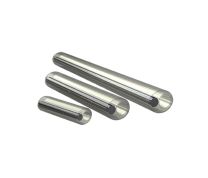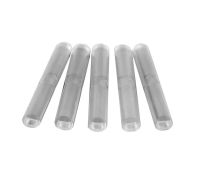Fiber Optic Center will be at OFC - and WSOF.
Schedule your meeting with a member of the FOC team now
Fiber Optic Splicing
Optical Fiber Splicing has two methods: mechanical or fusion... Read More
 Splice Tech Micro Series Fusion Protection Sleeve, 15mm, 900um
Splice Tech Micro Series Fusion Protection Sleeve, 15mm, 900umSplice Technologies Micro Series Heat Shrink Fusion Protection Sleeve, 15mm, for up to 450um buffere...
Part: FSS-RC15 AFL FPS Fusion Protection Sleeve, 15mm, 900um
AFL FPS Fusion Protection Sleeve, 15mm, 900umAFL Global FPS-01-900-15 Heat Shrink Fusion Protection Sleeve, 15mm, for up to 900um buffered fibers...
Part: S012684 AFL FPS Fusion Protection Sleeve, 15mm, 400um
AFL FPS Fusion Protection Sleeve, 15mm, 400umAFL Global FPS-01-400-15 Heat Shrink Fusion Protection Sleeve, 15mm, for up to 400um coated fiber, C...
Part: S012668 Splice Tech Mini Series Fusion Protection Sleeve, 15mm, 900um
Splice Tech Mini Series Fusion Protection Sleeve, 15mm, 900umSplice Technologies Mini Series Heat Shrink Fusion Protection Sleeve, 15mm, for up to 900um buffered...
Part: FSS-MC15 Splice Tech Z Series Fusion Protection Sleeve, 15mm, 900um
Splice Tech Z Series Fusion Protection Sleeve, 15mm, 900umSplice Technologies Z Series Heat Shrink Fusion Protection Sleeve, 15mm, for up to 450um buffered fi...
Part: FSS-ZC15
Fiber Optic Splicing
Optical Fiber Splicing has two methods: mechanical or fusion. Light passing through joined fibers cannot be scattered or reflected. 1) Mechanical splicing does not require a fusion splicer, joining fibers so light can pass from one to another introducing higher reflection than fusion method. 2) Fusion splicing has longer life than mechanical by fusing the cores with less attenuation, producing transparent, non-reflective, continuous connection enabling low loss light transmission. Field installations use splicing to restore fiber optic cables when buried cable is accidentally severed.
Shop
